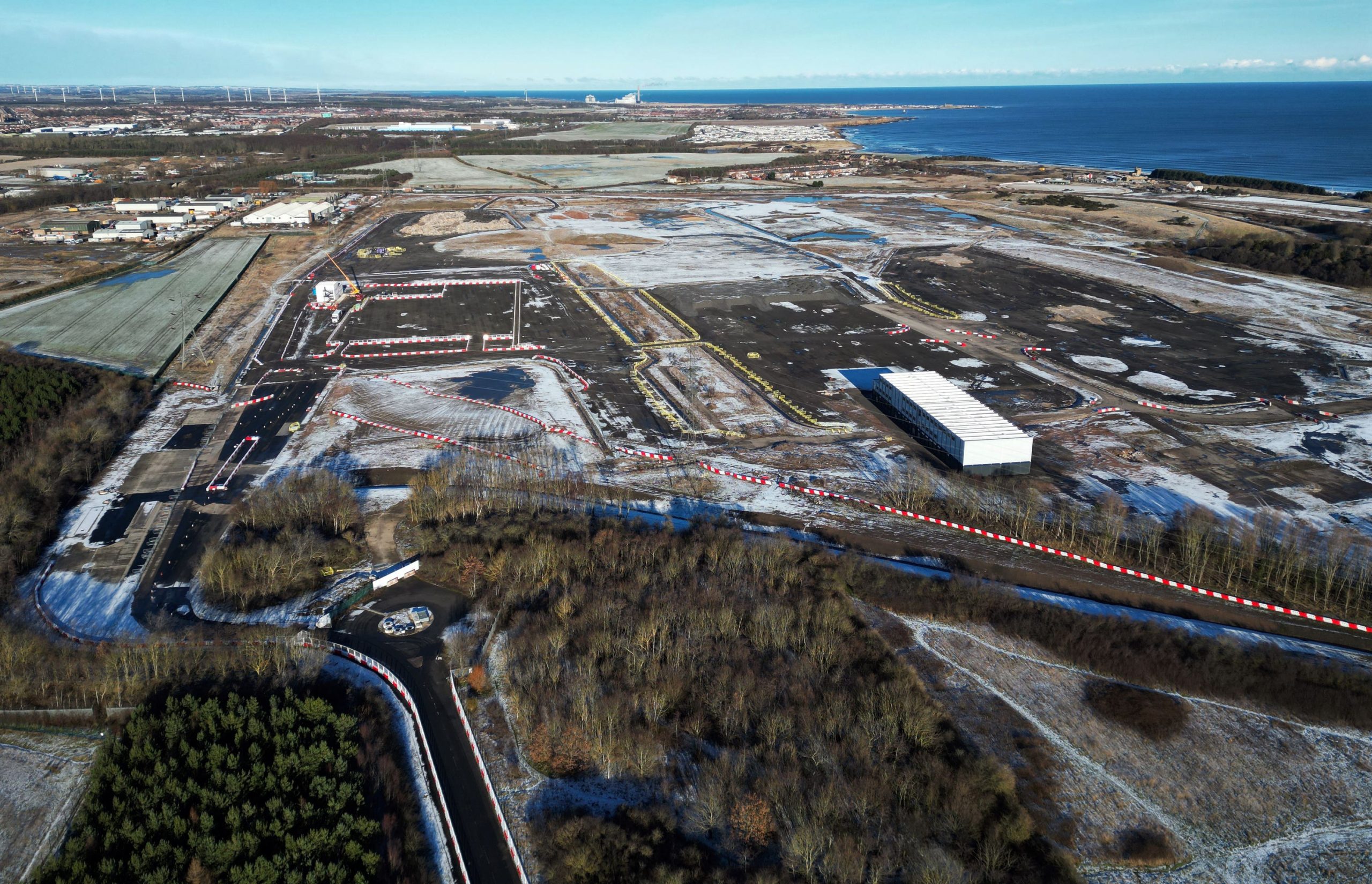In the middle of January 2022, then-prime minister Boris Johnson trumpeted the thousands of skilled jobs the Britishvolt gigafactory was expected to create.
Almost exactly a year on, the site on the outskirts of Blyth, Northumberland, is deserted, save for two security guards who confirmed no workers were there.
Announcing the Government was backing the ambitious project with cash from the Automotive Transformation Fund 12 months ago, Mr Johnson said Britishvolt would employ 3,000 people directly – with another 5,000 in the pipeline.
It was thought the Government put in around £100 million towards the £3.8 billion project and, last January, Mr Johnson talked of the plant being part of the UK’s “global green industrial revolution”.
Britishvolt expected to make 300,000 battery units a year, fulfilling the demand for around one in four vehicles sold on the British market.
The plan was to develop the 95-hectare site, where a coal-burning power station once stood, and use Norwegian hydro-electric power transmitted 447 miles under the North Sea via the world’s longest inter-connector.
When it was first announced in late 2020, it was hoped the investment would be comparable in the North East to that of Nissan in Sunderland in the 1980s.
But the firm could not secure funding to take the project on and has gone into administration with the loss of 300 jobs.
Opposing political figures in the North East hope it could still happen.
Labour’s North of Tyne elected mayor, Jamie Driscoll, said: “This is still the best site in the country for a gigafactory and I’m sure we’ll see interest in it.”
And Ian Levy, Tory MP for red wall seat Blyth Valley, said he will ask the Government to continue its automotive fund commitment with a future developer.
He said: “The UK automotive industry’s need for a battery gigafactory remains and the site on the Blyth Estuary is still the best in the country with a large area, excellent power connectivity, a deep-water port, strong workforce supply and easy access to the national road network.”

